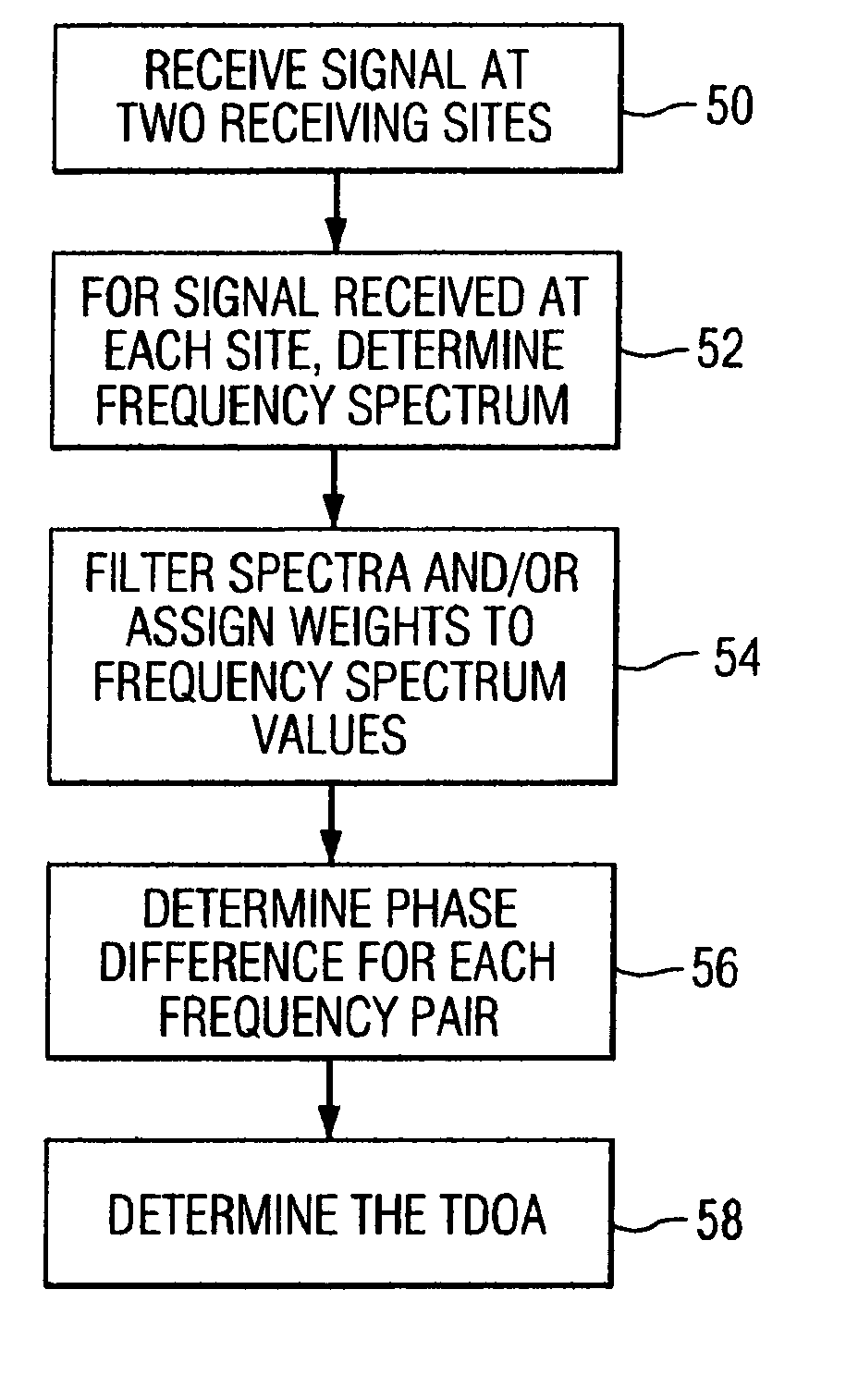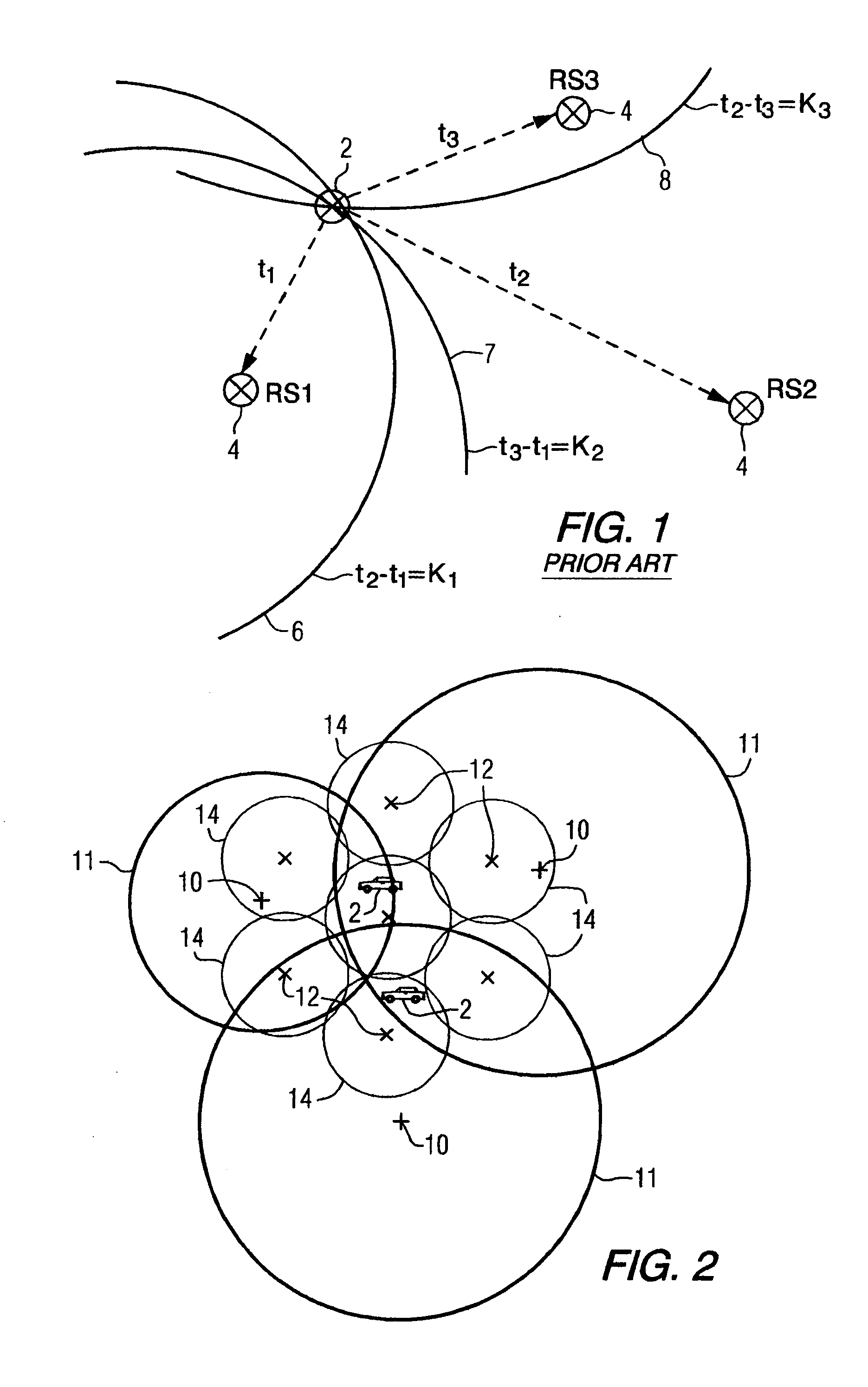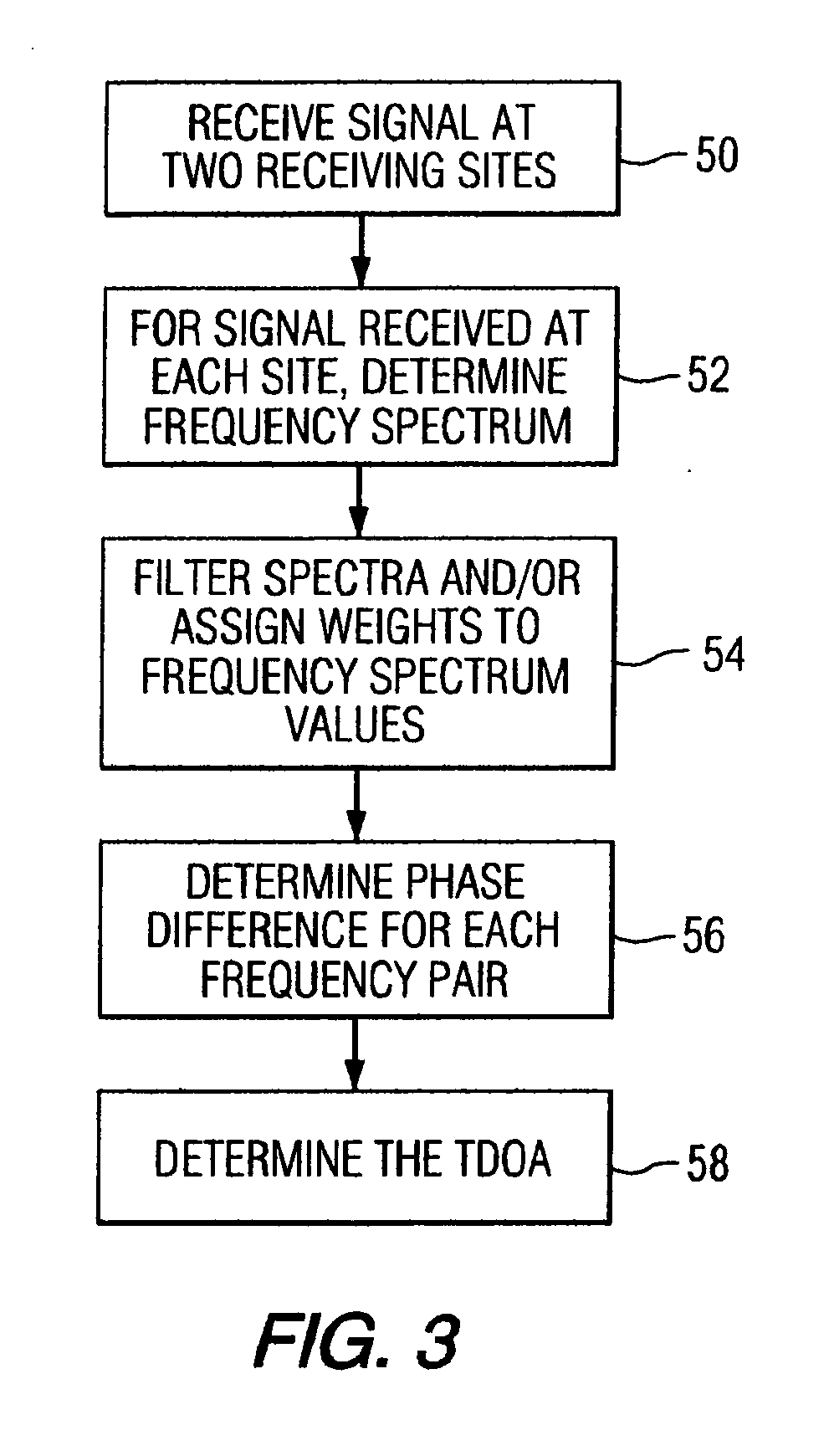Method and apparatus for geolocating a wireless communications device
a wireless communication and geographic position technology, applied in the direction of direction finders using radio waves, instruments, special services for subscribers, etc., can solve the problems of inability to provide location information directly to emergency services personnel, communication device users may be in unfamiliar territory, and inability to use calling telephone numbers as positioning aids, etc., to avoid computation time, high signal-to-noise ratio, computationally simple and robust
- Summary
- Abstract
- Description
- Claims
- Application Information
AI Technical Summary
Benefits of technology
Problems solved by technology
Method used
Image
Examples
Embodiment Construction
[0030] Before describing in detail the particular method and apparatus for locating wireless communications devices in accordance with the present invention, it should be observed that the present invention resides primarily in a novel combination of hardware elements and software elements related to a method and apparatus for locating wireless communications devices. Accordingly, the hardware and software elements have been represented by conventional elements in the drawings, showing only those specific details that are pertinent to the present invention, so as not to obscure the disclosure with structural details that will be readily apparent to those skilled in the art having the benefit of the description herein.
[0031]FIG. 2 shows a map view of a geographical area including three monitoring stations 10 at or near the center of monitoring regions 11, and a plurality of base stations (or receiving sites) 12 at or near the center of a cell coverage areas 14. The monitoring region...
PUM
 Login to View More
Login to View More Abstract
Description
Claims
Application Information
 Login to View More
Login to View More - R&D
- Intellectual Property
- Life Sciences
- Materials
- Tech Scout
- Unparalleled Data Quality
- Higher Quality Content
- 60% Fewer Hallucinations
Browse by: Latest US Patents, China's latest patents, Technical Efficacy Thesaurus, Application Domain, Technology Topic, Popular Technical Reports.
© 2025 PatSnap. All rights reserved.Legal|Privacy policy|Modern Slavery Act Transparency Statement|Sitemap|About US| Contact US: help@patsnap.com



